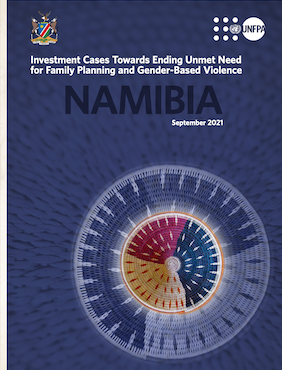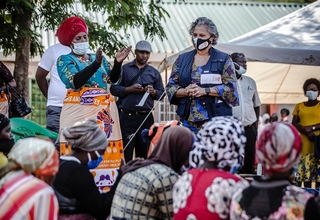Namibia has a population of about 2.5 million people, which is projected to reach 3.0 million in 2031 (NHS, 2019). The current annual population growth rate is about 1.9 per cent but is expected to decline to 1.7 per cent by 2030. The female population is approximately 1.29 million (52 per cent), while the male population is about 1.21 million (48 per cent). Overall life expectancy is 63.4 years; 66.2 years for females, and 60.4 for males.
There has been a significant decline in the fertility rate from 4.5 children per woman in 1996 to 3.3 children per woman in 2019. However, the high level of teenage pregnancy is a serious concern. The national teenage pregnancy rate stands at 19 per cent, suggesting that one in five adolescent girls aged 15 to 19 years has begun childbearing. The country has a young population, with over 35 per cent under 15 years.
The two investment cases developed for Namibia – (1) Ending unmet need for family planning and (2) Ending gender-based violence – are expected to inform strategic partnership efforts and mobilize additional domestic and external financing required to achieve the transformative results for the country. With the continuously evolving sustainable financing landscape, situating investments within the development, humanitarian and peace nexus
in the country is critical, considering the increased occurrences of public health emergencies.
Read the synthesis report.




